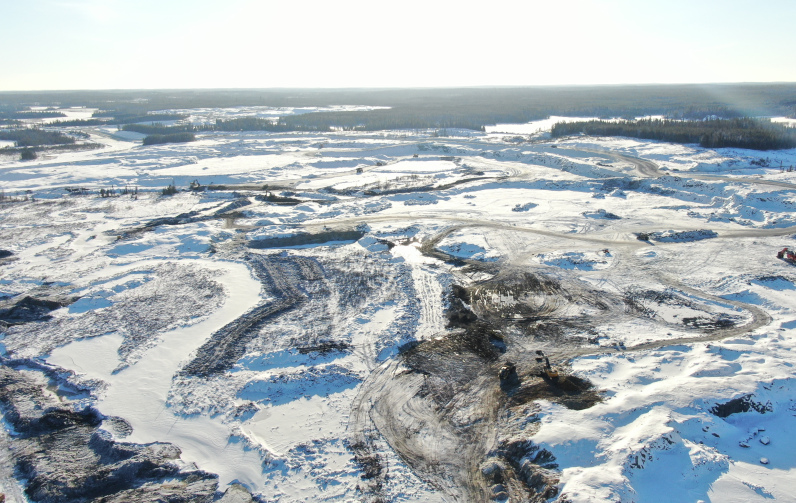NRCan commissioned the report from Enviro Integration Strategies CEO Karen Chovan (pictured) and Materials Efficiency Research Group directors Alan Young and Maria Laura Barreto. Photo by Jon Benjamin Photography
As industries around the world look to decarbonize in order to help address climate change, increasing supply of vital minerals and metals used in green technologies like batteries or solar panels will be required. Increased demand means more mines and more mineral processing. At the same time, the mining industry is equally looking to reduce or eliminate emissions and waste at their operations.
One strategy that is being looked at is the “circular economy” – a concept that looks to eliminate waste and pollution by generating value from normally wasteful processes. However, implementing that at a mining operation could take any number of forms.
In order to advance the understanding of the potential value of circular economy in mining, Natural Resources Canada commissioned Alan Young and Maria Laura Barreto, directors at Materials Efficiency Research Group, and Karen Chovan, founder and CEO of Enviro Integration Strategies and chair of the Environmental & Social Responsibility Society of CIM, to deliver a report detailing the strategies and opportunities of taking a circular economy approach to mining.
According to Young, it was important to understand the substantial potential benefits of going beyond incrementalism in applying circular economy to operations. The more a company invests in the integrated systems of a circular economy model, the more their operations will be able to take full advantage of the associated opportunities on site and throughout their supply ecosystems.
“Both of us have been working in this space for a long time, and frankly, it’s [mostly] been a harm reduction model. How do you do less harm? How do you minimize the impact or mitigate stuff?” Young said. “That’s all good and important, but there’s a powerful sense that this is more of a transformation piece. How do you move to net benefit? How do you really move into closed loops? And how can the industry rise to this moment where we need a lot more metals, and we can’t justify a conventional industrial model for a variety of reasons?”
Related: The dawn of the next super-cycle for metals is now here, according to Canadian economist Patricia Mohr
The most common application of circular economy in mining currently involves reprocessing tailings materials in order to extract left over minerals, but according to Chovan, there are plenty more opportunities to take advantage of the resources available to a mining operation, for instance reusing or donating used equipment, but there is also an opportunity to make strides towards ESG goals as well.
“We need to look at ourselves as borrowers of the land. What are we creating of value in that space, and not just pulling ore out of the ground but what can we do on that property?” Chovan said. “What else can we do to bring value long term to these regions? What are we doing with the land [and infrastructure] after the mine is closed? What else can we facilitate, even during operations, to bring broader benefits to the region extending beyond the mine life?”
Each mine is different, however, and thus there is no one-size-fits-all approach to what a circular economy-focused mine will look like. The report mentions that mines that follow accepted responsible mining standards such as Mining Association of Canada’s Towards Sustainable Mining might already be implementing many elements of a circular economy approach at their operations without realizing, but there is a large opportunity for mining companies to generate value by moving from incremental improvements to an overall transformational shift.
One of the main drivers towards that shift is through collaborations and partnerships between different corporations and sectors of the industry. Rather than having numerous environmental innovations developed individually, it can be beneficial to share knowledge across the supply chain to more efficiently integrate them into operations and generate value.
“One of the things that [big mining companies] are doing is these assessments of how many siloed initiatives are currently under way, which are broadly efficiency- or sustainability-[focused], but they’re not talking to each other really,” Young said. “So taking a systems approach, doing an operations-wide assessment and then looking for opportunities where you can start to integrate and accelerate things that are moving towards zero waste or carbon neutrality, and start to get them to actually work together.”
For circular economy to truly succeed in mining, it will take support from the government through investment in innovation and well-defined strategies, but it will also take a shift in the mindset of how mining companies look at their assets.
“I think that just one mindset shift would move things a long way, and that would be to place value on all the materials that they have to move, not just the target commodity that they’re producing. All of the minerals are potential assets,” Chovan said. “And if they would actually evaluate the value of those materials the same way they do for all the other infrastructure that they operate, they may treat them very differently, and it could shift the business model by doing that. You can still optimize around one product, but that doesn’t mean that everything else is waste.”
“Towards a Circular Economy Approach to Mining Operations: Key Concepts, Drivers and Opportunities,” is available to read online.




